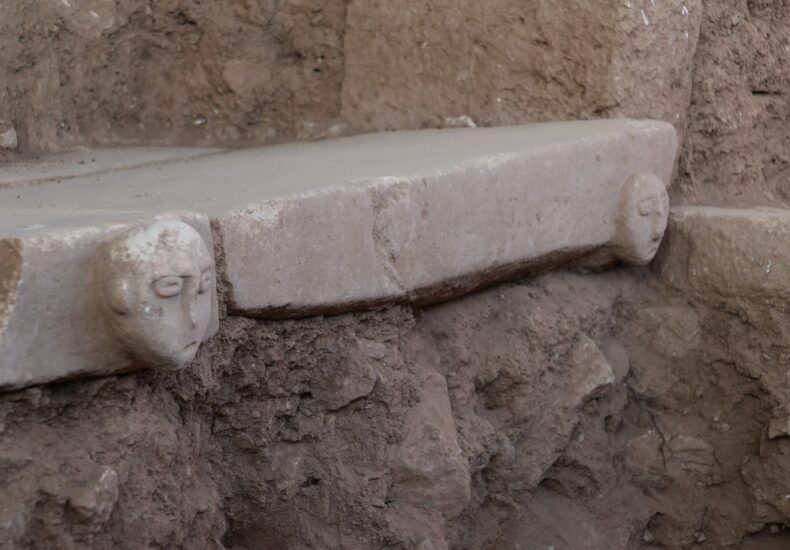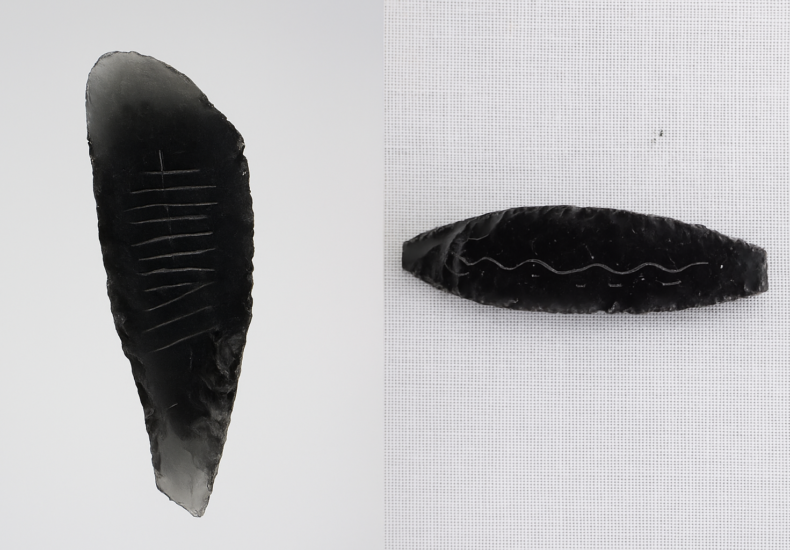
At Sefertepe, Tiny Carvings and a 10,000-Year-Old Skull Room Reveal an Unexpected Symbolic World
The first days of the 2025 excavation season at Sefertepe were expected to bring steady progress, not paradigm-shifting discoveries. Yet on a gentle rise overlooking the plains of Viranşehir, two deceptively small finds—a micro-carved basalt bead and a compact limestone block with dual faces—have redirected scholarly attention toward this lesser-known corner of the Taş Tepeler

8,500-Year-Old Obsidian Mirrors Unearthed at Canhasan, Home to Anatolia’s Oldest Known Street
The Neolithic settlement of Canhasan in Karaman—long recognized for preserving Anatolia’s oldest known street—has yielded an extraordinary new discovery. During this year’s excavations, archaeologists uncovered a set of finely crafted obsidian mirrors dating back 8,500 years, along with decorated obsidian tools that reveal a distinct symbolic tradition within Central Anatolia’s early farming communities. A Settlement

At Termessos, Archaeologists Restore Two Monumental Tombs After Millennia
High on the rugged slopes beneath Mount Güllük, one of Türkiye’s most dramatic archaeological landscapes has begun to reveal its monumental funerary architecture once more. Termessos—protected for millennia by its steep terrain and remembered as the mountain city that even Alexander the Great could not conquer—is now the focus of an ambitious restoration campaign that

New Coastal Excavations at Perinthos Reveal Signs of Shell Processing on the Marmara Shore
Archaeologists working along the northern shores of the Sea of Marmara have uncovered compelling clues to a little-known aspect of daily life in ancient Perinthos. Recent excavations at Mola Burnu—one of the least explored corners of the ancient city—have brought to light a dense concentration of pierced mussel shells, carefully carved bone hairpins, and multiperiod

A Roman Mosaic Found 11 Years Ago in Iznik Is Finally Being Revealed: The Askania Figure Emerges
A remarkable discovery in northwest Türkiye is resurfacing after more than a decade. In 2014, workers laying a sewer line in Iznik (ancient Nicaea) briefly uncovered part of a Roman mosaic floor before the area was sealed and placed under protection. What appeared to be a single decorated panel has now, after 11 years, turned

After 43 Years of Searching, the Long-Lost Zeus Temple Emerges at Limyra
Archaeologists working at Limyra in Türkiye’s Antalya province have finally located the long-missing Temple of Zeus — a sanctuary known from epigraphic sources since 1982 but never identified on the ground. The discovery, made in cooperation with the Austrian Archaeological Institute, is poised to reshape long-held interpretations of the ancient city’s sacred topography. A Lycian

3,000-Year-Old Urartian Wall Paintings Protected Beneath Van’s Garibin Hill
Deep beneath the rugged terrain of eastern Türkiye, archaeologists have uncovered one of the most extraordinary artistic survivals of the Urartian Kingdom — a network of subterranean chambers whose walls still bear vivid, 3,000-year-old paintings. The fragile murals, discovered accidentally during an illegal excavation in Van’s Tuşba district, are now being carefully preserved under a

Architectural Traces Predating the Karaz Culture Unearthed in Eastern Anatolia’s Değirmenler Mound
Archaeologists in eastern Türkiye have uncovered architectural remains predating the Karaz (Early Bronze Age) culture during ongoing rescue excavations at Değirmenler Mound in Erzurum’s Yakutiye district. The discovery—revealing structures, hearths, ovens, and domestic layers dating back more than 6,000 years—suggests that settled life in the region began earlier than previously believed. The excavation, conducted under


